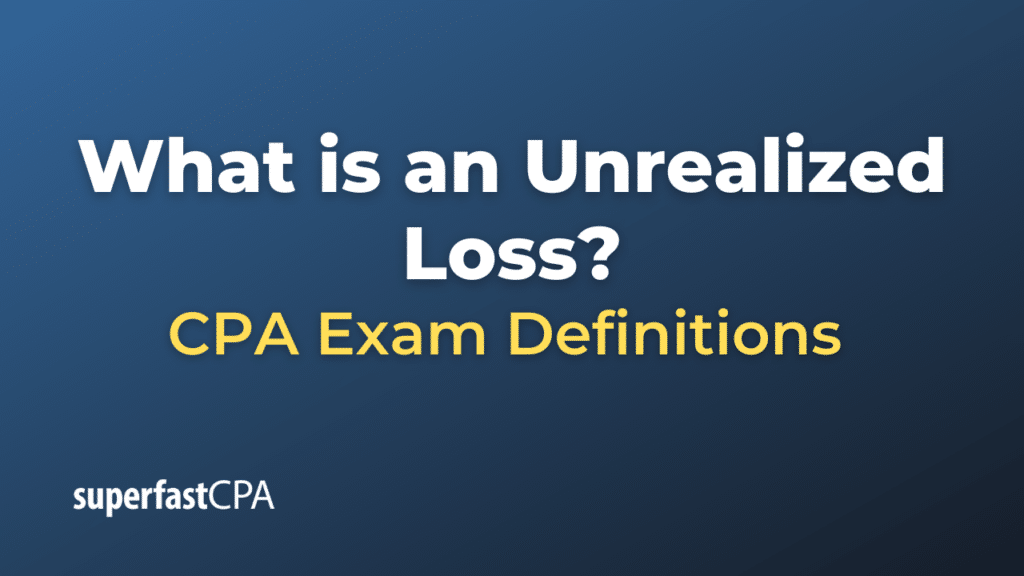Unrealized Loss
An “Unrealized Loss” is a loss that occurs on paper when the current market value of an asset or investment falls below the price originally paid for the asset, but the asset has not yet been sold. Since the asset is still owned and not sold, the loss is “unrealized” and only exists in theoretical terms. Once the asset is sold at the reduced market value, the unrealized loss becomes a “realized loss,” meaning that it is an actual, not theoretical, loss.
The concept applies to various types of investments and assets such as stocks, bonds, real estate, and foreign currency. Unrealized losses do not have immediate tax implications for most individual investors because they are not considered actual losses until the asset has been sold. However, businesses may need to account for unrealized losses in their financial statements, depending on the type of asset and its intended use.
In summary, an unrealized loss is a loss that exists on paper due to a decrease in market value but hasn’t been locked in through a sale. Once the asset is sold, the loss becomes realized.
Example of an Unrealized Loss
Let’s use a straightforward example involving stocks to illustrate what an “Unrealized Loss” is.
Scenario:
- John buys 50 shares of Company ABC at $20 per share.
- Initial Investment: 50 shares * $20/share = $1,000
- A few weeks later, the price of Company ABC’s stock falls to $15 per share.
- Current Market Value: 50 shares * $15/share = $750
Calculating Unrealized Loss:
- Unrealized Loss = Initial Investment – Current Market Value
- Unrealized Loss = $1,000 (Initial Investment) – $750 (Current Market Value)
- Unrealized Loss = $250
At this point, John has an unrealized loss of $250 on his investment in Company ABC’s stock. This loss is “on paper” because John still owns the stock; he hasn’t sold it yet.
Options for John:
- Hold onto the Stock: If John believes that Company ABC’s stock price will recover, he might decide to continue holding the stock. If the stock price rises again, his unrealized loss could decrease, or even turn into an unrealized gain.
- Sell the Stock : If John decides to sell the shares at the current market value of $750, the $250 unrealized loss becomes a “realized loss.” Now it is an actual loss and could generally be reported for tax purposes.
- Buy More Shares : John could decide to “average down” by buying more shares at the lower price of $15. This will reduce his average cost per share, which could potentially make it easier for him to recover his loss if the stock price goes back up. However, it could increase his risk if the stock price continues to decline.
In terms of tax implications, the unrealized loss of $250 is not deductible for John until he sells the shares and the loss becomes “realized.
This example should help clarify the concept of an “Unrealized Loss.”













